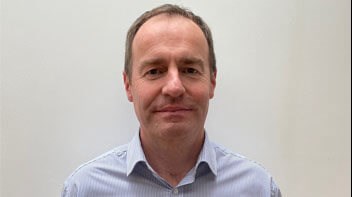Last month, we embarked on a journey. A journey towards the ‘Zero Carbon Construction Site’ of the future. Going one step further than before, over the next twelve months, we’ll be focused on reducing our scope 1, 2 and 3 emissions at our Edinburgh Biomes project at the Royal Botanic Garden Edinburgh.
And today, to ensure our industry moves towards a Net Zero future, together, we’ve shared the first in our series of diary entries; highlighting our progress and the obstacles we’ve faced over the last month. Needless to say. We’ve already learnt a lot.
You might have guessed - working towards Zero Carbon doesn’t necessarily fit our ‘business as usual approach’ yet. It’s called for us to look afresh at our processes, for us to consider how and what we procure, and what we’re measuring – we need Zero Carbon to be part of the conversation as early as possible if we are to meet our targets.
As outlined in our Roadmap, we’ve also created a new body to help coordinate the resource and expertise from across our UK business. We recognise that we need to further bolster our Delivery Group with additional Procurement resource, as well as a Net Zero Champion and Carbon Manager, to help us accurately calculate and record our carbon impact and support our teams in making better decisions.
On site, we’ve been busy trialling solar-hybrid generators. We’ve introduced a standalone Solar Hybrid WC Toilet Unit and a further two units, powered by roof mounted solar panels, with generators for back up.
We already know that solar-hybrid generators can reduce carbon emissions but given the generally cool and wet climate in Scotland, we’ve been pleasantly surprised at their success and have shared our learnings back to the rest of our business.
They’re considerably more sizable than traditional generators though, so we need to make sure we’ve factored their inclusion into our planning, so they can be located in the best possible position, to maximise the power they produce.
But it hasn’t all been plain sailing. We’ve had to make difficult decisions too, when it comes to heavy plant.
We were unfortunately unable to secure a fully electric excavator– the electric excavators available to our industry at the moment, simply aren’t big enough for the job. In addition, we couldn’t get our hands on a hybrid model either.
As such, we’ve kickstarted a conversation about the use of retrofitted heavy plant and what our hierarchy of carbon efficient plant should look like, taking circular economy considerations into account.
Moving forward, we’ll be looking to adopt new tools and solutions – including Balfour Beatty’s own state-of-the-art EcoNet system, developed in collaboration with Sunbelt and Invisible Systems, which autonomously manages power demand by automatically turning appliances and equipment off when not in active use.

Colin Reid, Project Manager